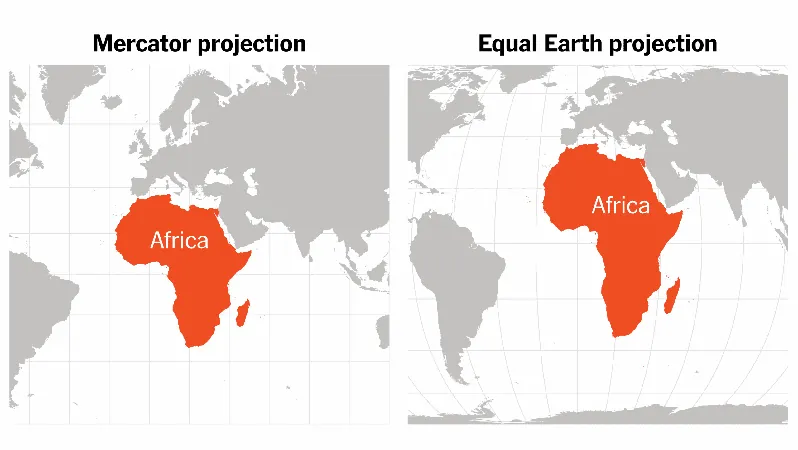
Revolutionizing Space Traffic: ESA’s CREAM Project Makes Waves
2025-08-13
Author: Liam
As Earth's orbit becomes increasingly crowded with satellites, the European Space Agency (ESA) is taking decisive action to protect these orbital assets and ensure a sustainable future in space.
With over 11,000 active satellites currently in orbit and predictions for tens of thousands more in the years to come, alongside more than 1.2 million pieces of debris larger than one centimeter, the risk of in-orbit collisions has reached a critical point.
Introducing CREAM: The Future of Space Traffic Management
To tackle this dilemma, ESA has launched the Collision Risk Estimation and Automated Mitigation (CREAM) project, a vital part of its Space Safety Programme. This innovative initiative aims to revolutionize space traffic management.
Traditional methods for collision avoidance demand that satellite operators manually evaluate threats and coordinate maneuvers, which can be laborious and disjointed. CREAM seeks to eliminate this inefficiency through advanced automation.
A Game-Changer for Satellite Operators
By automating collision risk assessments and maneuver planning, CREAM will streamline operations, reducing false alarms and expediting crucial decision-making processes. This not only alleviates the workload on operators but also enhances overall safety of space missions.
Building an Interconnected Space Ecosystem
One of CREAM’s most ambitious goals is creating a connected network among various stakeholders—satellite operators, space situational awareness providers, regulators, and observers. This interconnected framework allows for rapid and transparent decision-making, especially when two operational satellites are in potential collision paths.
The system is designed to even facilitate maneuver negotiations between operators with minimal human intervention, escalating disputes to mediation services if necessary, thus ensuring fairness while protecting crucial space assets.
From Ground Trials to Space Implementation
Since its inception in 2020, CREAM has made significant strides. Led by GMV and supported by Guardtime, the project's core components are being integrated into a single platform. As it stands, the prototype can generate collision alerts, suggest evasive maneuvers, and promote inter-operator cooperation—all while still on the ground.
The next phase includes a pilot program to further enhance decision-support technologies, alongside plans for in-orbit demonstrations where CREAM will be launched as a digital payload.
Shaping Future Space Regulations
Beyond immediate safety measures, CREAM has the potential to redefine space traffic management regulations. The age-old dilemma of enforcing 'rules of the road' in orbit has stifled progress—without the right technology, rules remain unenforceable, and without clear regulations, technology remains underutilized.
Integrating CREAM into spacecraft will enable operators to comply effortlessly with emerging best practices. Meanwhile, regulators will gain a formidable monitoring tool to ensure adherence, evolving with the rapid developments in orbital activities.
Towards a Safer Cosmic Environment
As commercialization of low-Earth orbit escalates, effective space traffic management is becoming more urgent. ESA's CREAM project marks a bold stride towards a synchronized, automated framework for preventing collisions and minimizing space debris.
If successful, CREAM could serve as the backbone of an international safety framework that ensures humanity can continue to explore the final frontier without cluttering it with an overflow of debris. This initiative is not just about safety—it's about preserving space for future generations.









 Brasil (PT)
Brasil (PT)
 Canada (EN)
Canada (EN)
 Chile (ES)
Chile (ES)
 Česko (CS)
Česko (CS)
 대한민국 (KO)
대한민국 (KO)
 España (ES)
España (ES)
 France (FR)
France (FR)
 Hong Kong (EN)
Hong Kong (EN)
 Italia (IT)
Italia (IT)
 日本 (JA)
日本 (JA)
 Magyarország (HU)
Magyarország (HU)
 Norge (NO)
Norge (NO)
 Polska (PL)
Polska (PL)
 Schweiz (DE)
Schweiz (DE)
 Singapore (EN)
Singapore (EN)
 Sverige (SV)
Sverige (SV)
 Suomi (FI)
Suomi (FI)
 Türkiye (TR)
Türkiye (TR)
 الإمارات العربية المتحدة (AR)
الإمارات العربية المتحدة (AR)